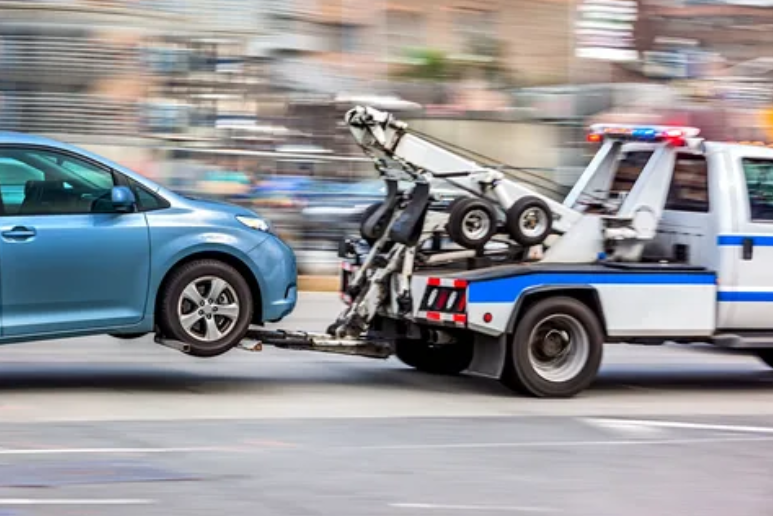
Towing an Unbraked Trailer: Common Mistakes to Avoid
Towing a trailer can be a great solution when you need extra space, whether you’re hauling lawn equipment, moving furniture, or transporting recreational gear. But if you’re towing an unbraked trailer, the rules of the road change a bit, and it’s easy to make mistakes that could lead to dangerous situations.
Whether you’re new to towing or just need a refresher, this guide covers the most common mistakes people make when towing an unbraked trailer to a towing vehicle and how to avoid them.
What is an Unbraked Trailer?
Before we get into the mistakes, let’s clarify the difference.
An unbraked trailer is a trailer that doesn’t have its own independent braking system. Instead, it relies on the braking power of the towing vehicle. These are typically smaller, lighter trailers (like utility trailers or small campers), and they usually weigh less than 750 kg (about 1,650 pounds), although exact laws vary depending on your location.
Since these trailers don’t have their brakes, it puts more pressure on your towing vehicle. That’s why understanding how to tow them safely is critical.
Mistake #1: Ignoring Towing Capacity
One of the most dangerous mistakes people make is overloading their towing vehicle. Every vehicle has a maximum towing capacity, and you should never exceed it, even if your trailer doesn’t have brakes.
Why It’s a Problem
Towing more weight than your vehicle is designed to handle can:
-
Overheat your engine or transmission
-
Reduce braking performance
-
Make steering harder
-
Increase stopping distance
-
Lead to accidents
How to Avoid It
Check your vehicle’s owner’s manual or manufacturer’s website to find out:
-
Towing capacity
-
Gross trailer weight (GTW)
-
Tongue weight (TW)
Then, weigh your trailer (with the load) to ensure it doesn’t exceed the recommended limits.
Mistake #2: Not Distributing Weight Evenly
Tossing everything into your trailer without thinking about how it’s loaded can create major issues.
Why It’s a Problem
If the weight is uneven or too far forward/backward, it can:
-
Cause trailer sway
-
Affect vehicle control
-
Damage your hitch
-
Make your ride uncomfortable
How to Avoid It
Always distribute the weight evenly across the trailer floor. Aim to place about 60% of the load over the front half of the trailer and make sure the tongue weight is roughly 10-15% of the total trailer weight.
Use tie-downs or straps to secure the cargo so it doesn’t shift while driving.
Mistake #3: Using the Wrong Hitch
Not all hitches are created equal. Using the wrong one can compromise your safety.
Why It’s a Problem
A mismatch between your hitch and trailer can:
-
Lead to trailer detachment
-
Increase sway
-
Damage your vehicle
How to Avoid It
Make sure the hitch is rated for the weight of your unbraked trailer. Also, check that the ball size matches the trailer coupler and that all connections are tight.
If you’re not sure, talk to a local trailer dealer or vehicle specialist.
Mistake #4: Forgetting to Check Tire Pressure
Yes, even your trailer has tires that need to be checked.
Why It’s a Problem
Under-inflated or worn tires can:
-
Reduce fuel efficiency
-
Lead to blowouts
-
Increase the stopping distance
How to Avoid It
Before every trip, check the tire pressure on both your vehicle and the trailer. Also look for signs of wear like cracks, bulges, or low tread.
Use a simple tire pressure gauge and make sure each tire meets the recommended PSI listed on the tire sidewall or owner’s manual.
Mistake #5: Skipping Safety Chains
Safety chains might not seem like a big deal, but they could be the one thing that prevents a disaster.
Why It’s a Problem
If your trailer gets disconnected from the hitch while driving, safety chains are your backup. Without them, the trailer can roll into traffic or cause an accident.
How to Avoid It
Always cross the chains underneath the hitch (not straight across) to create a cradle that can catch the trailer tongue if it detaches. Make sure they’re not dragging on the ground, but also not too tight.
Mistake #6: Not Accounting for Longer Stopping Distances
An unbraked trailer means your vehicle does all the braking work. This increases the time and distance it takes to come to a stop.
Why It’s a Problem
Not giving yourself enough room to brake can lead to rear-end collisions, jackknifing, or loss of control, especially in rain or downhill situations.
How to Avoid It
-
Increase your following distance
-
Brake earlier than usual
-
Drive more slowly in heavy traffic or on steep grades
Mistake #7: Forgetting to Adjust Mirrors
You need full visibility when towing, especially with an unbraked trailer.
Why It’s a Problem
If you can’t see your trailer or what’s behind you, you’re more likely to:
-
Change lanes unsafely
-
Miss hazards
-
Get into accidents
How to Avoid It
Adjust your side mirrors so you can see the trailer sides and the road behind. You may also consider adding towing mirrors that extend your view.
Mistake #8: Overlooking Local Laws and Speed Limits
Many drivers don’t realize that towing laws vary from state to state.
Why It’s a Problem
You could end up:
-
Getting fined
-
Losing your license
-
Voiding your insurance
How to Avoid It
Do a quick online search for your state’s towing laws. For example, many states limit the speed limit to 55 mph when towing an unbraked trailer. Others may require certain safety features, even for smaller trailers.
Mistake #9: Not Practicing Before Hitting the Road
Driving with an unbraked trailer feels very different from driving solo.
Why It’s a Problem
If you’re not comfortable with your trailer, you may:
-
Oversteer
-
Understeer
-
Have trouble reversing or turning
How to Avoid It
Spend some time practicing:
-
Backing up in a parking lot
-
Making wide turns
-
Parking
-
Navigating tight spots
The more confident you are, the safer you’ll be on the road.
Mistake #10: Ignoring Trailer Maintenance
Even if your trailer doesn’t have brakes, it still needs basic maintenance.
Why It’s a Problem
Neglecting your trailer can lead to:
-
Flat tires
-
Faulty lights
-
Hitch issues
-
Broken axles
How to Avoid It
Check your trailer regularly for:
-
Tire condition
-
Rust or corrosion
-
Wiring problems (especially lights)
-
Signs of damage or wear
A quick once-over before every trip can prevent major issues later.
FAQs
1. Is it safe to tow an unbraked trailer with any vehicle?
Not always. You should only tow an unbraked trailer if your vehicle is rated for it. Many compact cars and smaller SUVs aren’t designed to handle even small trailer weights, especially without trailer brakes. Always check your towing capacity and match it with the trailer weight.
2. What is the maximum weight for an unbraked trailer?
It depends on where you live, but in many U.S. states, the maximum trailer weight without brakes is around 1,500 to 3,000 pounds. Once you exceed that, you’re legally required to have a brake trailer. Always check with your local Department of Transportation or DMV to be sure.
3. Can I add brakes to my unbraked trailer later?
Yes, you can. If you plan to carry heavier loads in the future, adding an electric or surge brake system to your trailer is a great idea. It improves safety, braking efficiency, and overall control. It’s an investment worth making, especially for longer trips or hilly terrain.
Final Thoughts
Towing an unbraked trailer can be safe and convenient, as long as you follow the rules and avoid common mistakes. From knowing your vehicle’s limits to securing your load and checking tire pressure, small steps make a big difference.
Always prioritize safety over speed. A little preparation now can save you from a big headache (or worse) down the road. Whether you’re towing a small utility trailer, a jet ski, or just extra gear for the weekend, treat your setup like a serious responsibility—because it is.





